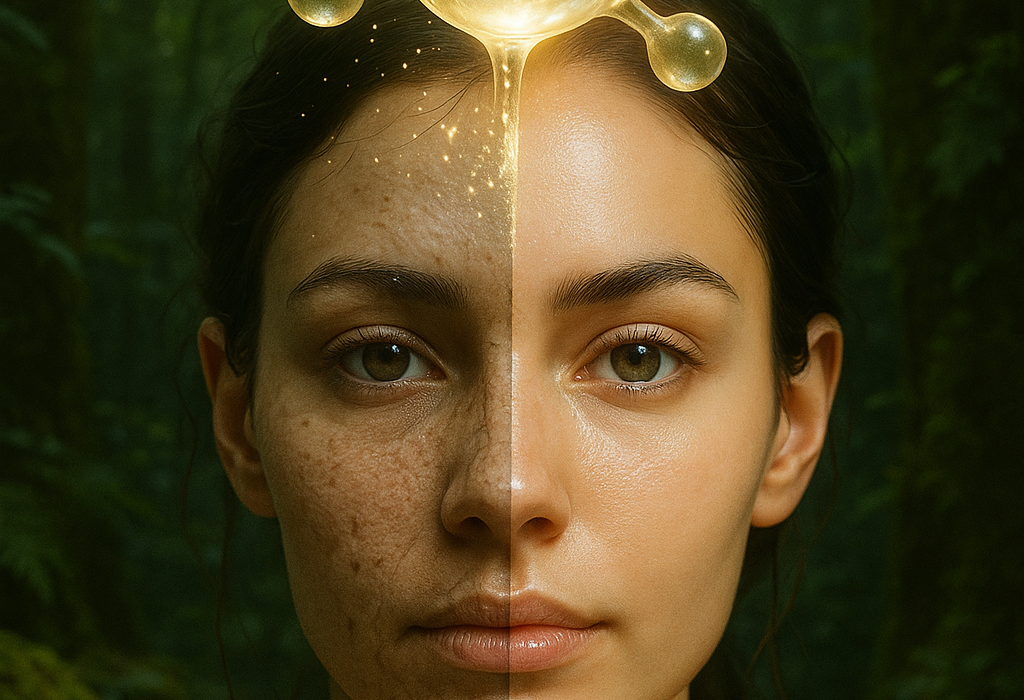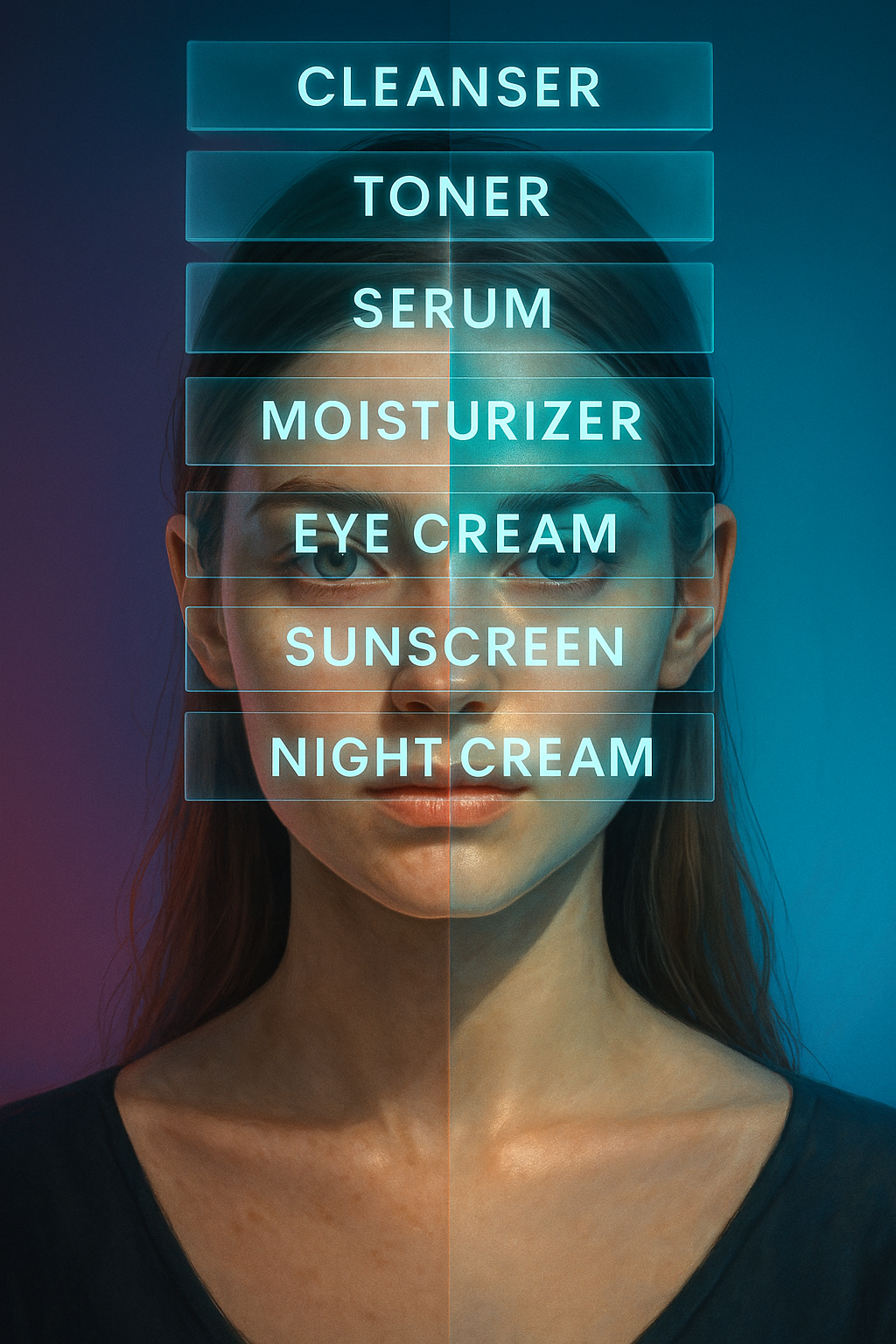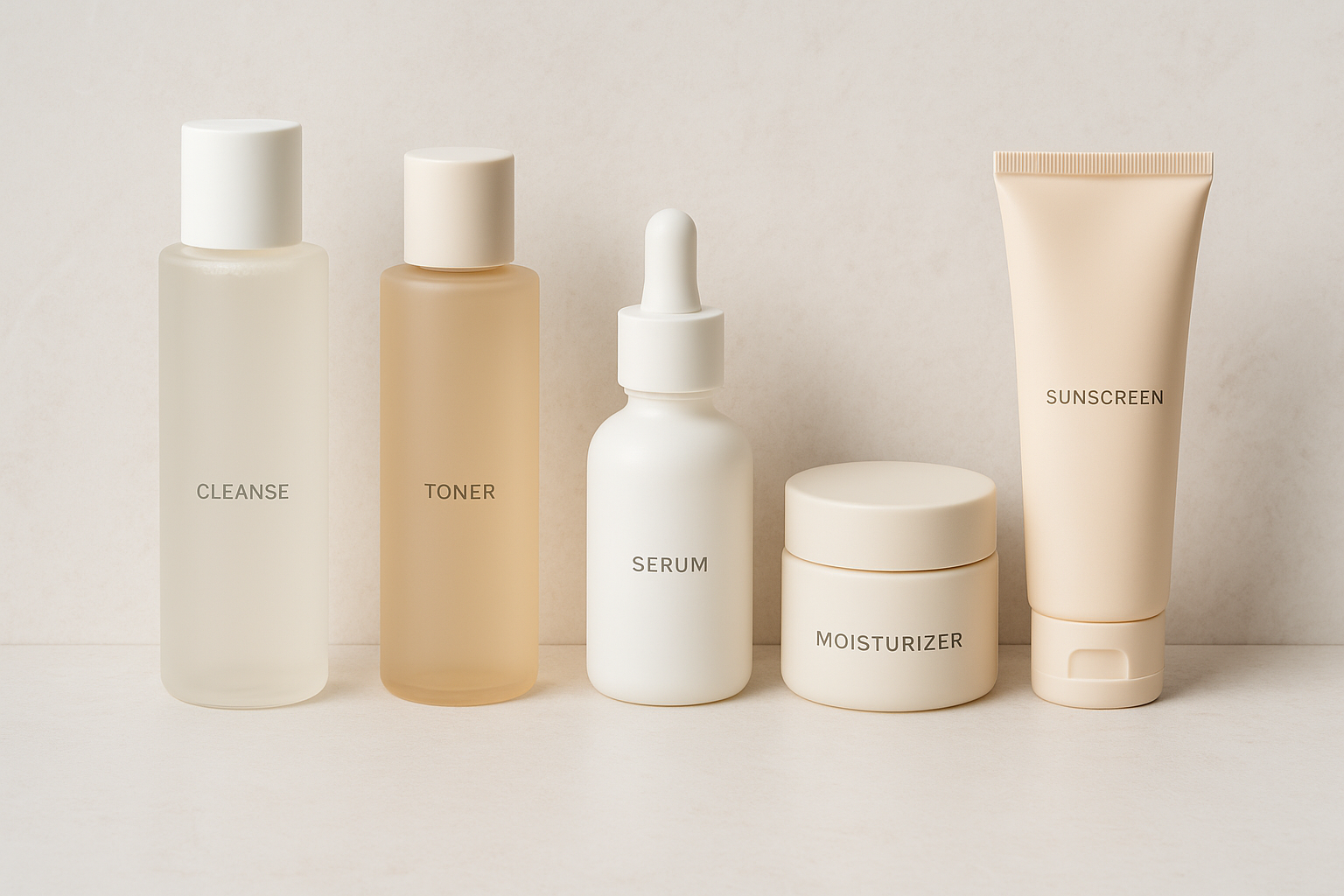If you’ve been scrolling through skincare social media or browsing beauty aisles lately, you’ve probably noticed niacinamide appearing everywhere. But unlike many trending skincare ingredients that come and go, niacinamide has earned its reputation through decades of scientific research and proven results.
This comprehensive guide reveals everything you need to know about niacinamide skin benefits, from the science behind its effectiveness to practical application tips that dermatologists swear by. Whether you’re dealing with enlarged pores, acne, hyperpigmentation, or simply want healthier-looking skin, niacinamide might be the game-changing ingredient your routine has been missing.
What Is Niacinamide? The Science Behind the Skincare Superstar
Niacinamide, also known as nicotinamide, is the active form of vitamin B3 (niacin). Unlike its cousin niacin, which can cause uncomfortable flushing, niacinamide is gentle and well-tolerated by virtually all skin types, including sensitive skin.
This water-soluble vitamin works at the cellular level to support multiple skin functions. Research published in the Journal of Cosmetic Dermatology shows that niacinamide penetrates the skin barrier effectively and remains active for hours after application, making it an incredibly efficient skincare ingredient.
Key Properties That Make Niacinamide Special:
- pH neutral – won’t disrupt your skin’s natural acid mantle
- Stable formulation – doesn’t degrade easily when exposed to light or air
- Multi-functional – addresses multiple skin concerns simultaneously
- Compatible – works well with other active ingredients like retinol and vitamin C
7 Science-Backed Niacinamide Skin Benefits That Will Transform Your Complexion
1. Dramatically Minimizes Pore Appearance
The Science: Clinical studies demonstrate that 5% niacinamide can reduce pore visibility by up to 23% after 8 weeks of consistent use. It works by improving skin texture and reducing the oil production that makes pores appear enlarged.
How It Works: Niacinamide regulates keratinocyte proliferation and improves skin surface irregularities, creating smoother-looking skin with less visible pores.
Best For: Those with oily skin, enlarged pores, or rough skin texture.
2. Balances Oil Production Without Over-Drying
The Science: Research shows niacinamide reduces sebum production by approximately 30% when used consistently. Unlike harsh drying agents, it maintains skin hydration while controlling excess oil.
How It Works: It modulates sebaceous gland activity and helps normalize the skin’s natural oil production cycle.
Best For: Oily, combination, or acne-prone skin types.
3. Strengthens and Repairs the Skin Barrier
The Science: Niacinamide increases ceramide synthesis by up to 34% and improves the skin’s ability to retain moisture. A stronger barrier means better protection against environmental stressors and irritants.
How It Works: It stimulates the production of essential lipids and proteins that form the skin barrier, including ceramides, cholesterol, and fatty acids.
Best For: Dry, sensitive, or compromised skin; those living in harsh climates.
4. Fades Hyperpigmentation and Dark Spots
The Science: Studies show 5% niacinamide can reduce hyperpigmentation by 35-68% over 4 months by inhibiting melanosome transfer from melanocytes to keratinocytes.
How It Works: It doesn’t stop melanin production entirely but prevents excess pigment from reaching the skin’s surface, resulting in more even skin tone.
Best For: Post-acne marks, melasma, sun spots, and uneven skin tone.
5. Reduces Inflammation and Redness
The Science: Niacinamide has proven anti-inflammatory properties, reducing inflammatory markers by up to 60% in clinical trials.
How It Works: It inhibits the release of inflammatory mediators and helps calm reactive skin conditions.
Best For: Rosacea, sensitive skin, post-breakout inflammation, and general skin irritation.
6. Stimulates Collagen Production for Anti-Aging Benefits
The Science: Research indicates niacinamide can increase collagen synthesis by 20-54% after 12 weeks of use, improving skin elasticity and reducing fine lines.
How It Works: It supports fibroblast function and promotes the production of structural proteins that keep skin firm and youthful.
Best For: Mature skin, fine lines, loss of elasticity, and prevention of premature aging.
7. Enhances Overall Skin Radiance and Texture
The Science: Clinical trials show significant improvements in skin brightness, smoothness, and overall appearance after 8-12 weeks of niacinamide use.
How It Works: By addressing multiple skin functions simultaneously, niacinamide creates a cumulative effect that results in healthier, more radiant skin.
Best For: Anyone wanting to improve their overall skin quality and appearance.
How to Use Niacinamide: Expert Application Guide for Maximum Results
Choosing the Right Concentration
Beginners: Start with 2-5% concentration to assess tolerance Experienced Users: 5-10% for maximum benefits (higher concentrations aren’t necessarily better) Sensitive Skin: Begin with 2% and gradually increase if needed
Step-by-Step Application Method
- Cleanse your skin thoroughly
- Apply toner (if using) and let it absorb
- Apply niacinamide serum to slightly damp skin
- Wait 5-10 minutes for full absorption
- Follow with moisturizer to lock in benefits
- Apply sunscreen (morning routine only)
Timing and Frequency
- Morning: Excellent for oil control and barrier protection
- Evening: Ideal for repair and regeneration
- Frequency: Can be used twice daily; start with once daily if you have sensitive skin
- Consistency: Results typically appear after 4-8 weeks of regular use
Professional Tips for Best Results
Layering Order: Water-based niacinamide products should be applied before oils and heavier creams pH Compatibility: Niacinamide works at skin’s natural pH, making it compatible with most products Seasonal Adjustments: May need higher concentrations in winter for extra barrier support
Niacinamide Compatibility: What Ingredients Work Best Together
Excellent Combinations:
- Hyaluronic Acid – Boosts hydration effects
- Retinol – Reduces potential irritation from retinoids
- Vitamin C – Enhances antioxidant protection (contrary to old myths)
- Salicylic Acid – Improves acne-fighting results
- Peptides – Amplifies anti-aging benefits
Ingredients to Use Cautiously:
- High-concentration AHAs – May cause irritation in some people
- Benzoyl Peroxide – Can reduce niacinamide effectiveness
Common Niacinamide Myths Debunked
Myth: “Niacinamide can’t be used with vitamin C” Truth: Recent research shows they work well together and may enhance each other’s benefits.
Myth: “Higher percentages are always better” Truth: Studies show diminishing returns above 5-10%; higher concentrations may cause irritation.
Myth: “Niacinamide causes purging” Truth: Unlike exfoliating acids, niacinamide doesn’t cause purging. Any breakouts are likely sensitivity reactions.
Who Should Use Niacinamide (Spoiler: Almost Everyone!)
Ideal Candidates:
- Oily or combination skin types
- Acne-prone individuals
- Those with enlarged pores
- People dealing with hyperpigmentation
- Sensitive skin sufferers
- Anyone wanting anti-aging benefits
- Those in harsh climates needing barrier support
When to Exercise Caution:
- Known sensitivity to niacinamide (rare but possible)
- Currently using multiple new active ingredients
- Extremely compromised skin barrier (introduce gradually)
Expected Timeline: When You’ll See Niacinamide Results
Week 1-2: Improved skin texture and reduced oiliness Week 4-6: Visible pore size reduction and decreased inflammation Week 8-12: Significant improvements in hyperpigmentation and overall skin tone Month 3+: Maximum anti-aging and skin barrier benefits
Choosing the Best Niacinamide Products: What to Look For
Key Features in Quality Formulations:
- Concentration: 2-10% niacinamide
- pH Level: 5.0-7.0 for optimal stability
- Additional Ingredients: Hyaluronic acid, zinc, or antioxidants
- Packaging: Dark or opaque bottles to prevent degradation
- Third-party Testing: Verified purity and potency
Red Flags to Avoid:
- Extremely high concentrations (20%+)
- Products with strong fragrances
- Formulations with known irritants
- Unrealistic marketing claims
Potential Side Effects and How to Avoid Them
While niacinamide is generally well-tolerated, some people may experience:
Minor Side Effects:
- Slight redness (usually temporary)
- Mild stinging sensation
- Increased sensitivity initially
Prevention Strategies:
- Start with lower concentrations
- Introduce gradually (every other day initially)
- Always patch test new products
- Discontinue if persistent irritation occurs
The Bottom Line: Why Niacinamide Deserves a Place in Your Skincare Routine
Niacinamide stands out as one of the most versatile and scientifically-proven skincare ingredients available today. Its ability to address multiple skin concerns simultaneously, combined with its gentle nature and compatibility with other ingredients, makes it an excellent choice for virtually any skincare routine.
Whether you’re dealing with specific skin issues like acne or hyperpigmentation, or simply want to maintain healthy, radiant skin, niacinamide offers proven benefits backed by decades of research. The key to success lies in choosing the right concentration, applying it consistently, and being patient as your skin transforms over time.
Remember, skincare is personal, and what works for others may not work identically for you. Start slowly, listen to your skin, and consider consulting with a dermatologist if you have specific skin concerns or conditions.
Ready to experience the transformative power of niacinamide? Start with a 5% concentration serum, use it consistently for at least 8 weeks, and prepare to see why this vitamin B3 derivative has become a non-negotiable step in skincare routines worldwide.







